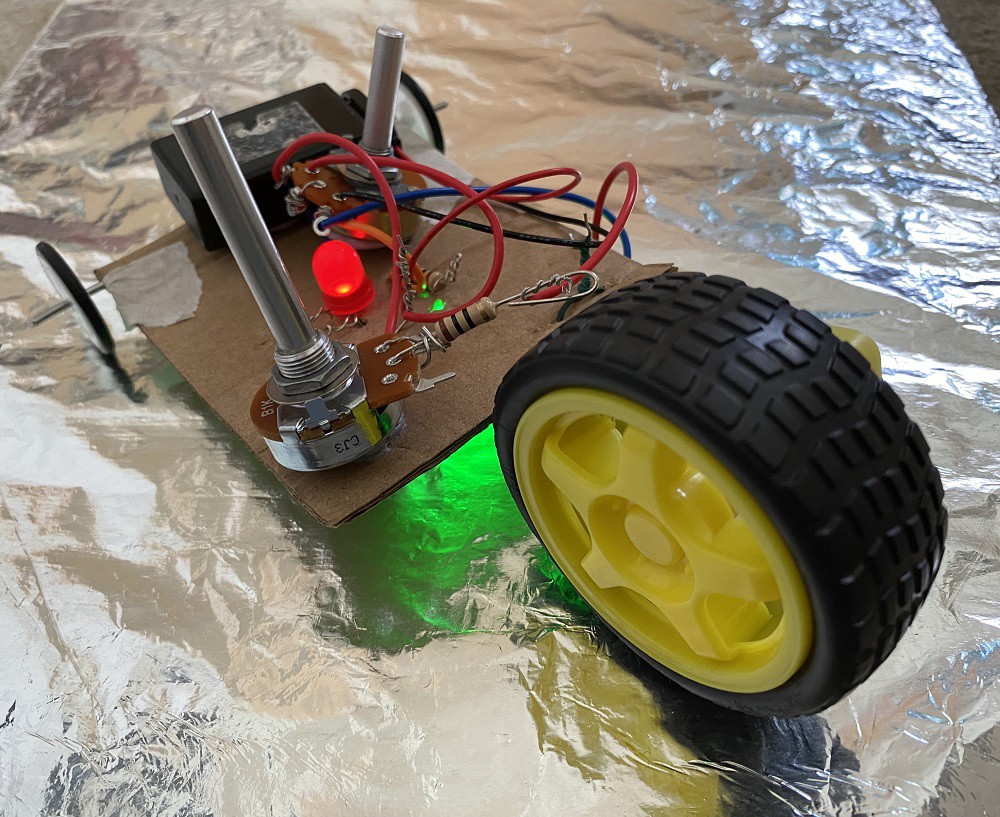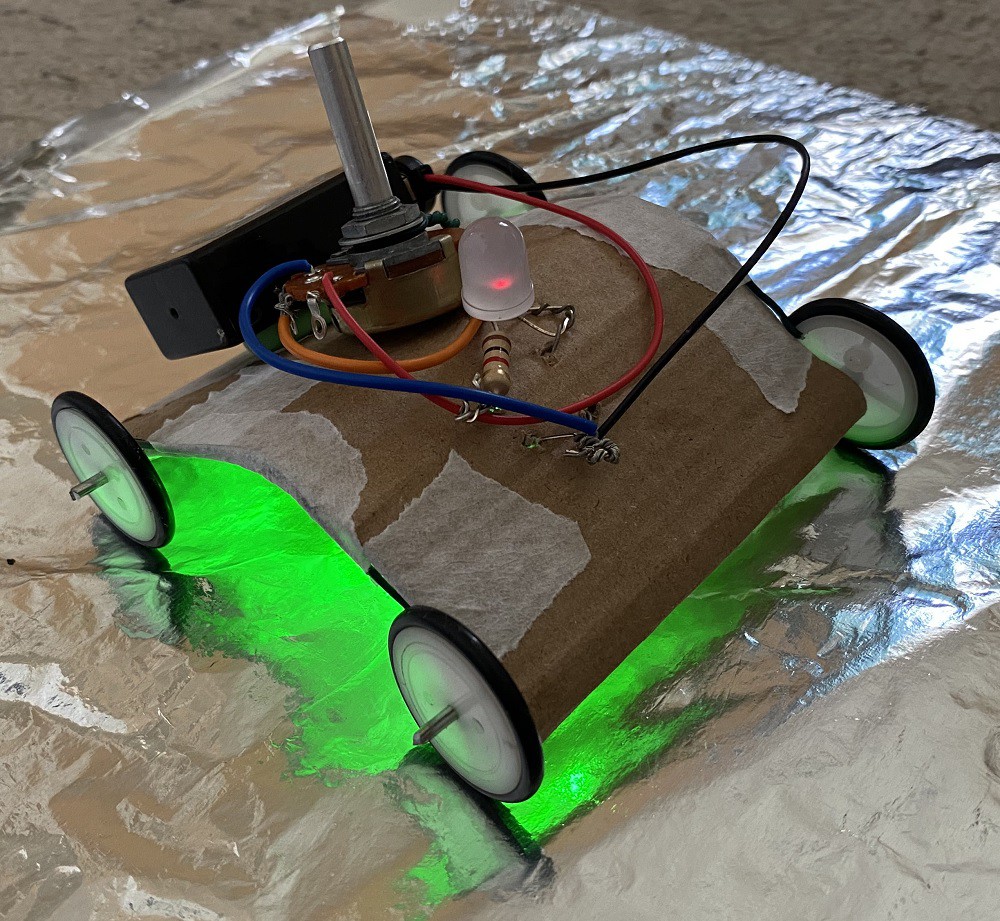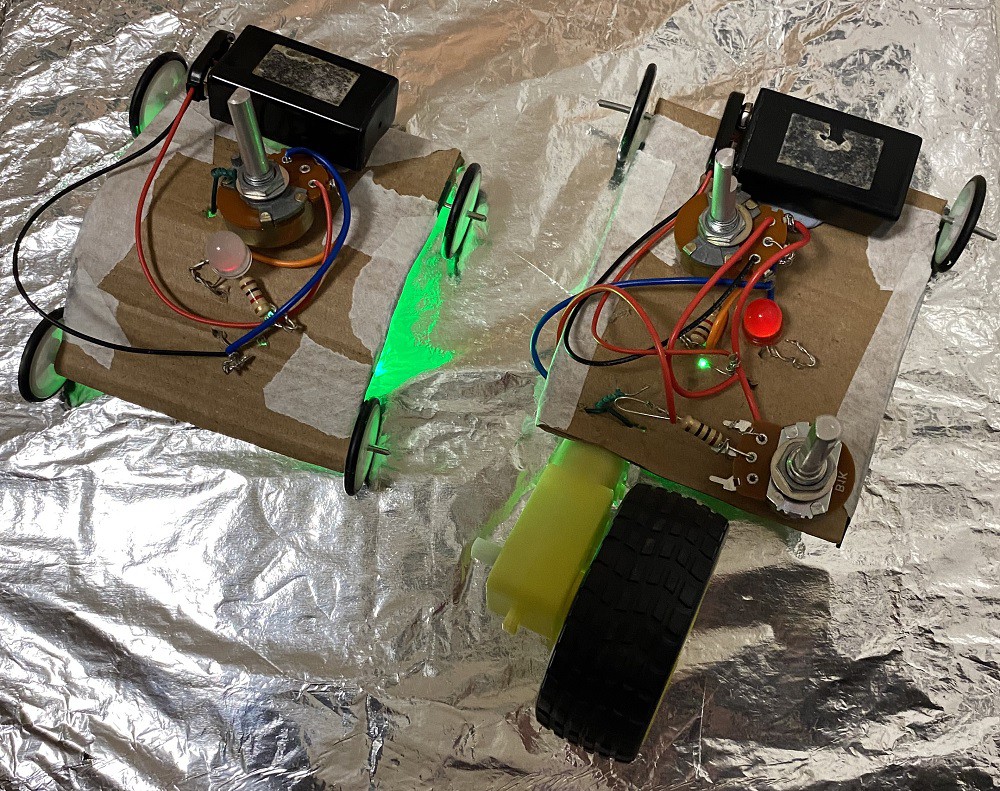This article is about reflection-detecting cars with no semiconductors included apart from the LEDs.
You can read a similar article here:
https://www.instructables.com/Reflection-Detecting-Cart-With-No-Semiconductors/
Car with motor:

Car without motor:

The cars work on the principle of light reflected from the foil that causes the LED to turn ON and OFF. This occurs because the foil is not even and different amounts of light are entering the sensor.
You can see the toy cars working in this video:
You might think that the LED is blinking because of power surges caused by the motor gear. This is why I also made a car with no motor to prove my concept.
Step 1: Design the Circuit
I used old PSpice simulation software that does not have an LED component. I modeled the LED with three general-purpose diodes.
The more light falls onto the LDR (light-dependent resistor) the smaller is the LDR resistance. In bright sunlight, the LDR resistance can fall to about 1 kohms.

I also included the illumination LED because there is little light underneath the car. The potentiometer is used to prevent saturation of the LED.
The 1.5 V AA battery pair (providing 3 V) would have been very useful for the motor, providing the right amount of current. However, because the minimum resistance of LDR does not fall below about 1 kohm I had to use a 9 V battery instead of two 1.5 V batteries. One solution was to use a separate battery for the motor gear. However, I decided to use a 9 V battery for the motor instead and included a resistor to reduce the current. The video shows that the car was very fast because of the high 9 V battery voltage.
Calculate the maximum LED current:
IledMax = (Vs - Vled) / Rldr
= (9 V - 2 V) / 1.2 kohms
= 5.833 mA
This current is very small for the LED that needs 20 mA. One solution is to connect multiple LDRs in parallel to increase the current. However, this solution will cost a lot of money.
Step 2: Simulations
I simulated the circuit with PSpice simulation software, student edition version 9.1
The graph below shows the currents for the two LEDS and the motor.

Step 3: Make the Circuit
I made the circuit with pliers by twisting the component legs with pliers. I did not use a soldering iron.
Top of the car:

Bottom of the car:

Step 4: Attach Metal Wire Reinforcements
I reinforced the cardboard with metal wire to prevent it from bending because the piece of cardboard can bend under pressure:

You can just see the green insulated 1 mm metal wire underneath the masking tape:

Step 5: Testing
Testing showed that the cars are working but the blinking of LED is not very evident.

Bottom of the car with motor:

Bottom of the car with no motor:

Video of the car with motor:
Video of the car with no motor:
Conclusion
You can make a photosensor car with semiconductors, as explained in this link:
 Easy Circuits
Easy Circuits
Discussions
Become a Hackaday.io Member
Create an account to leave a comment. Already have an account? Log In.